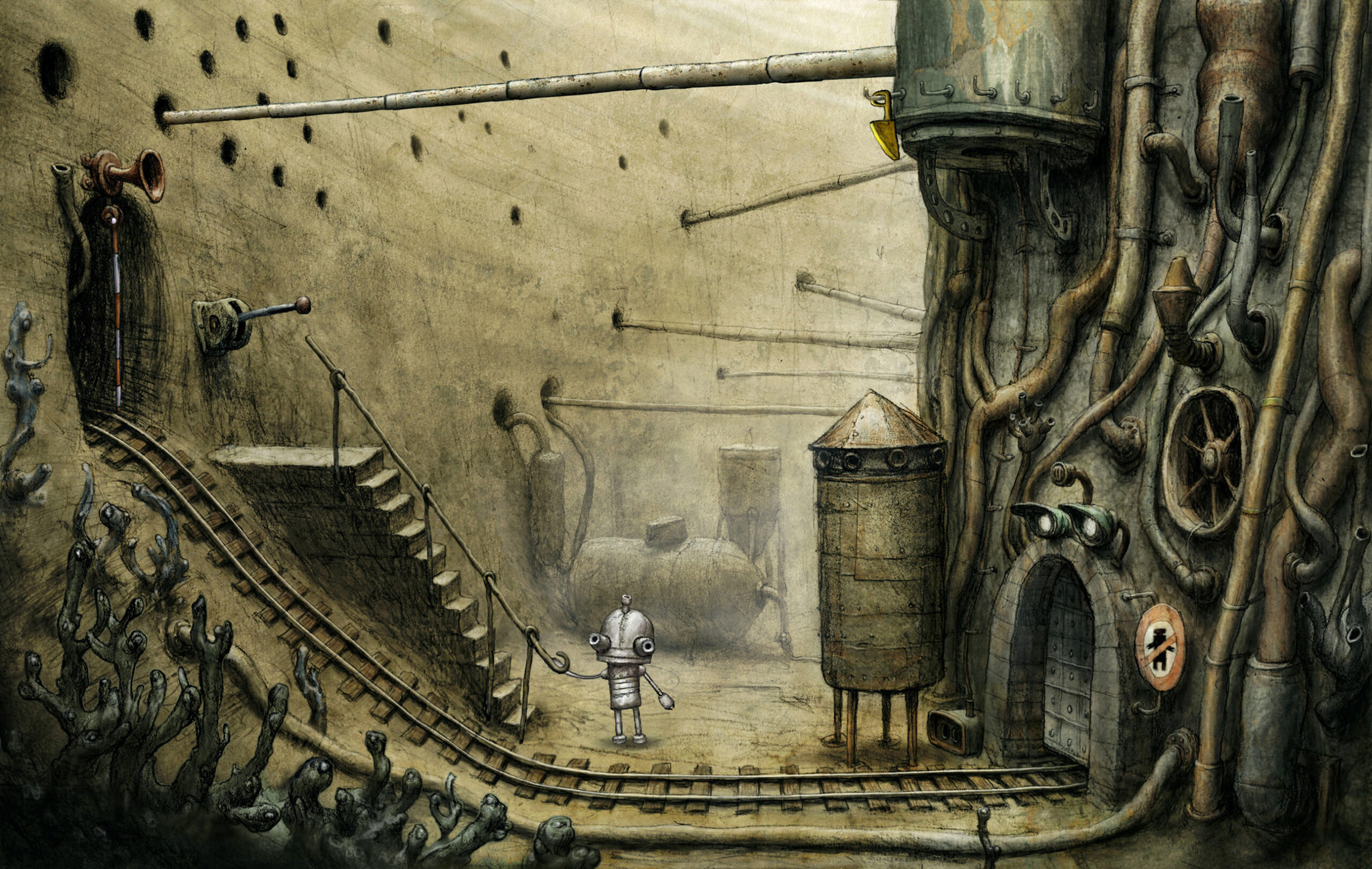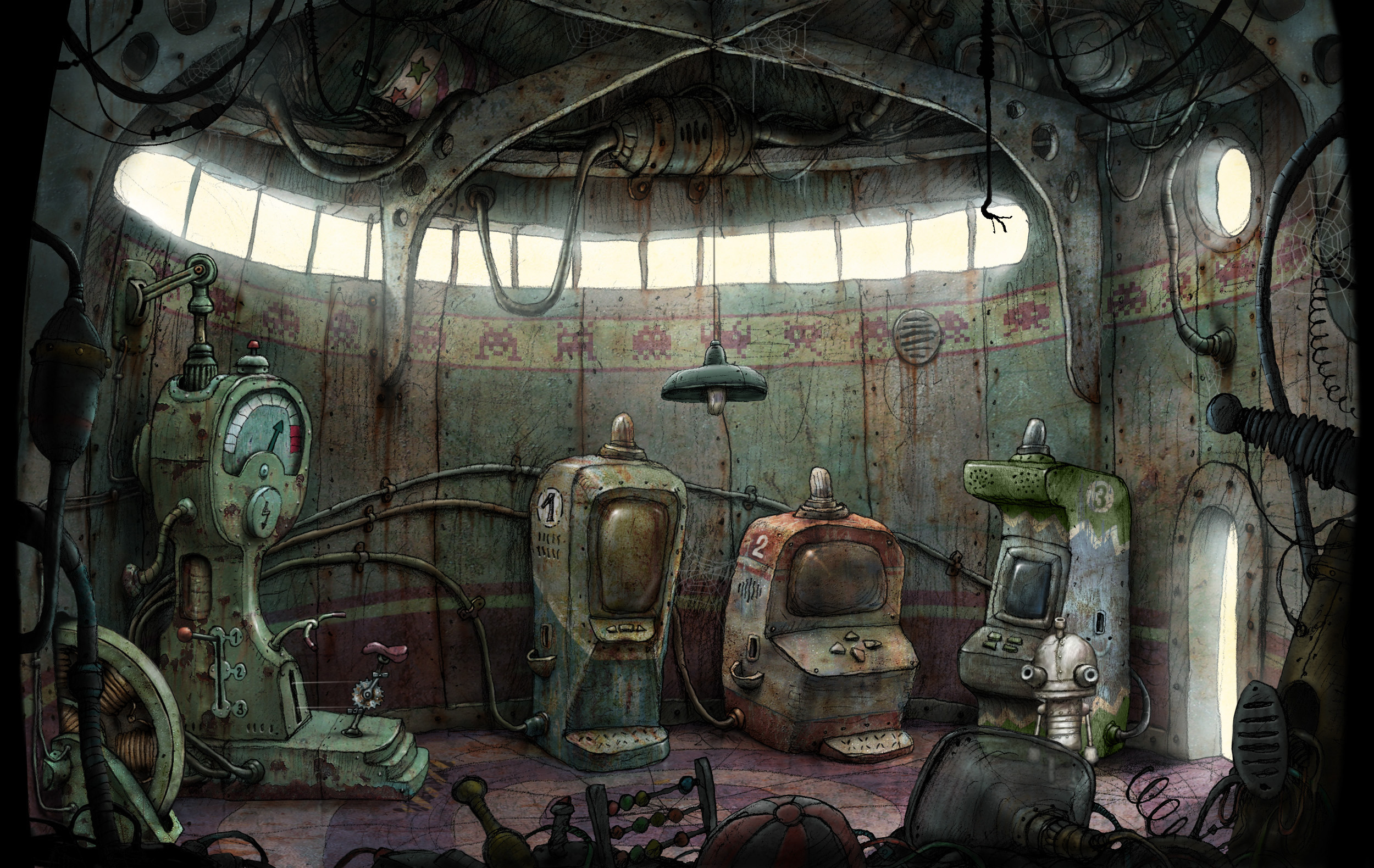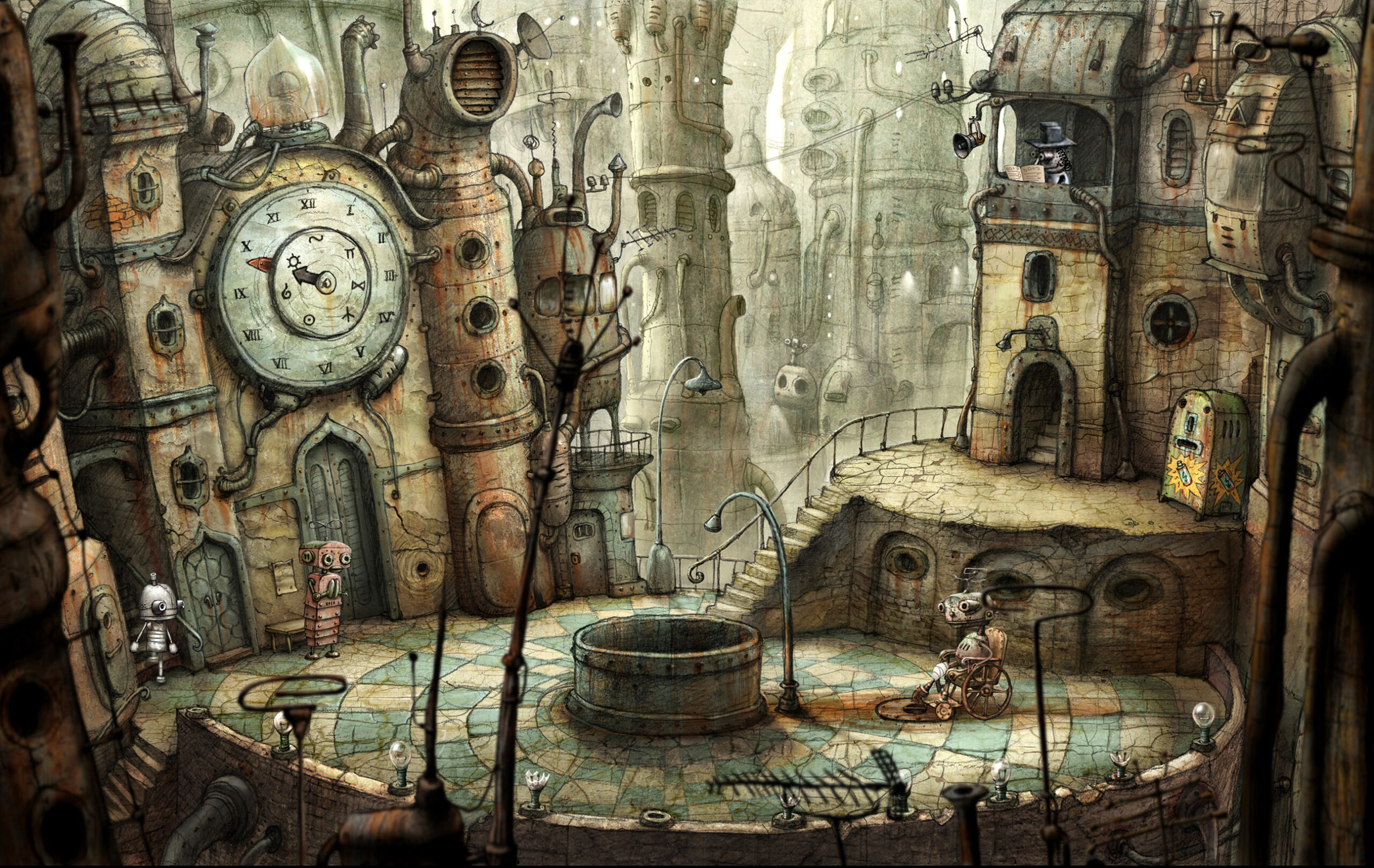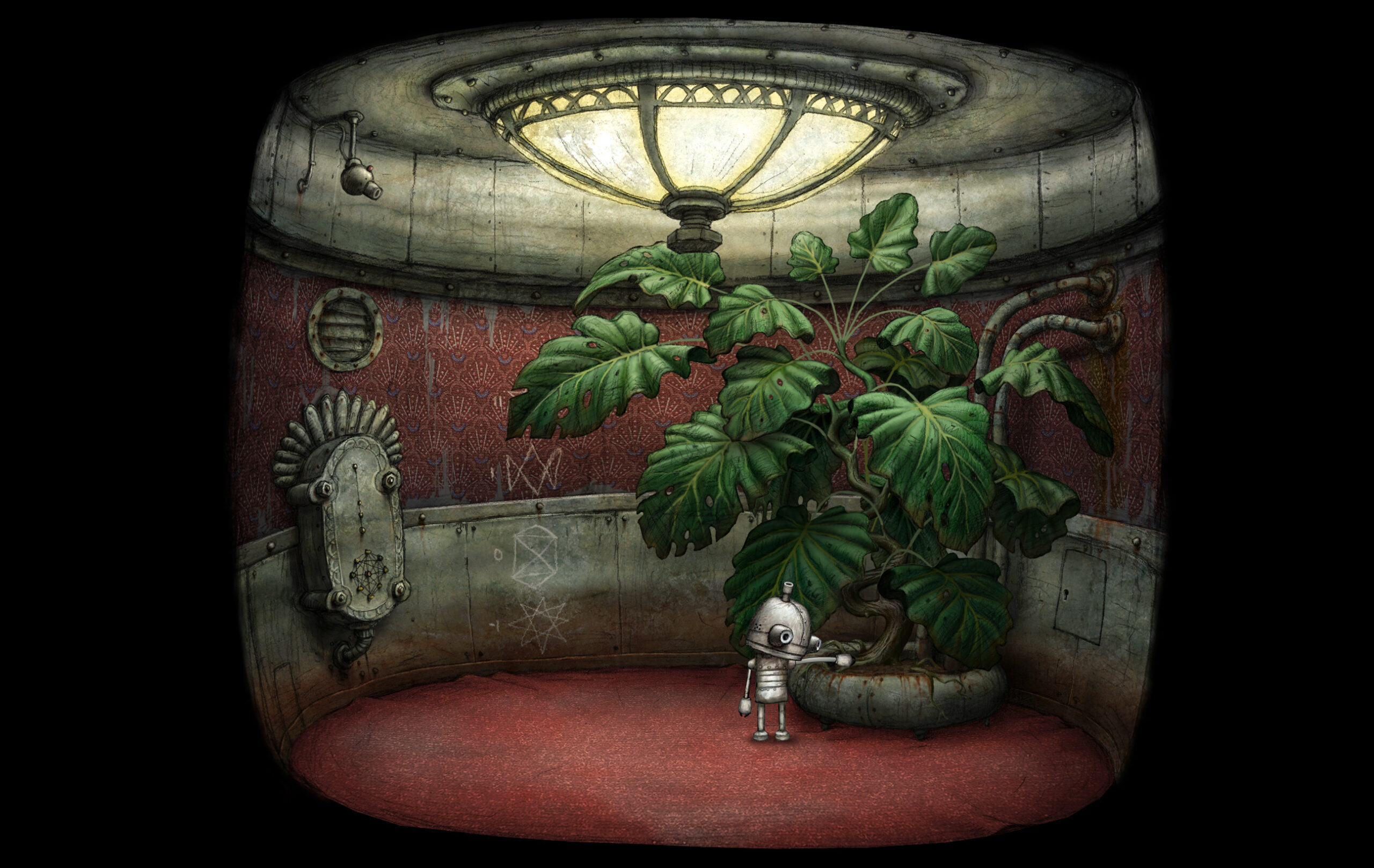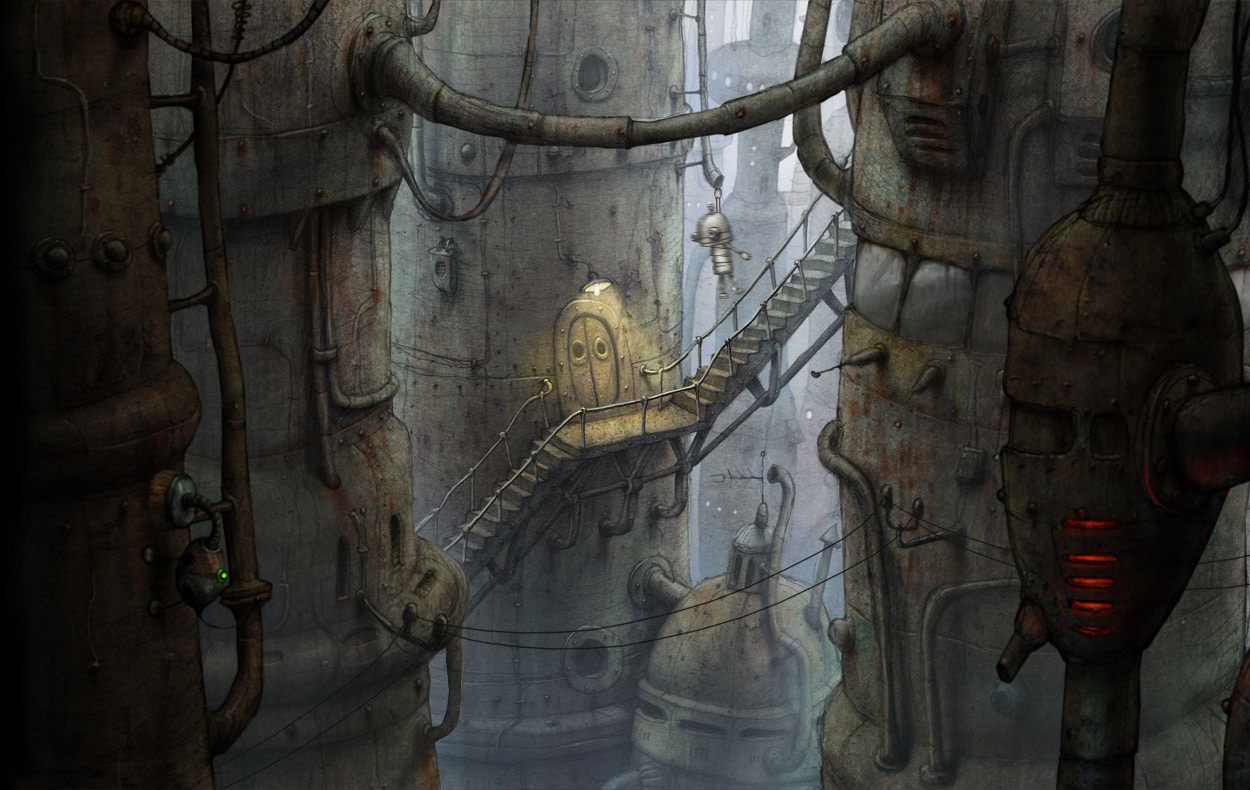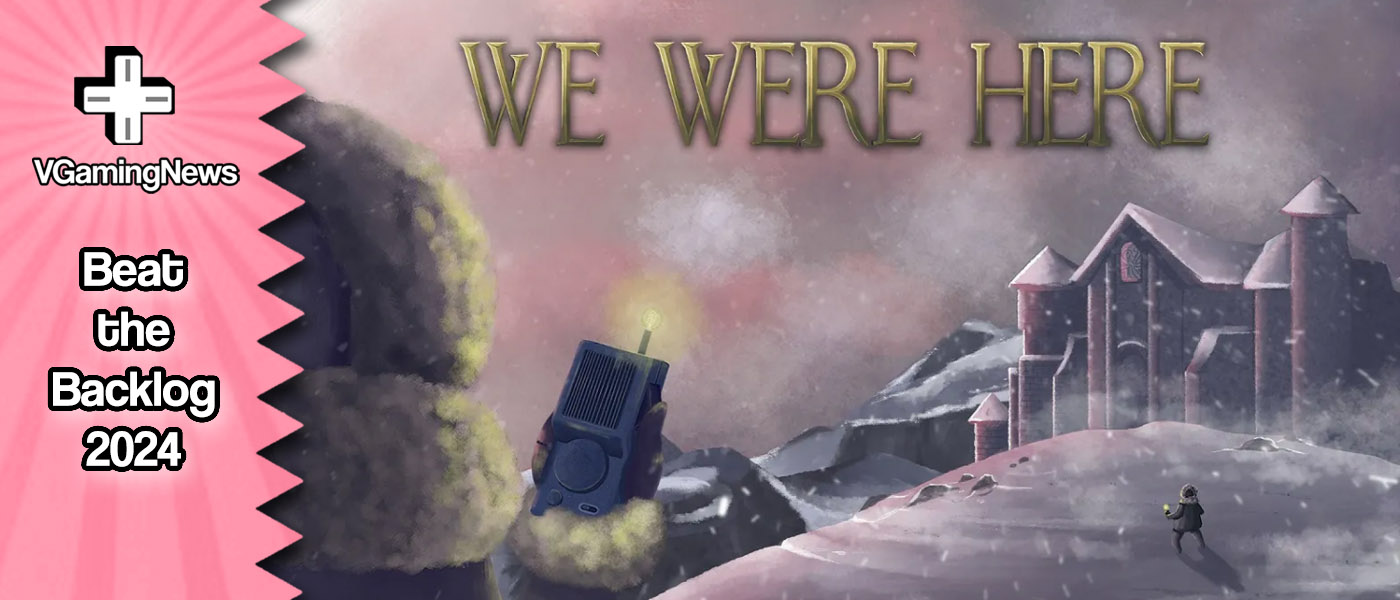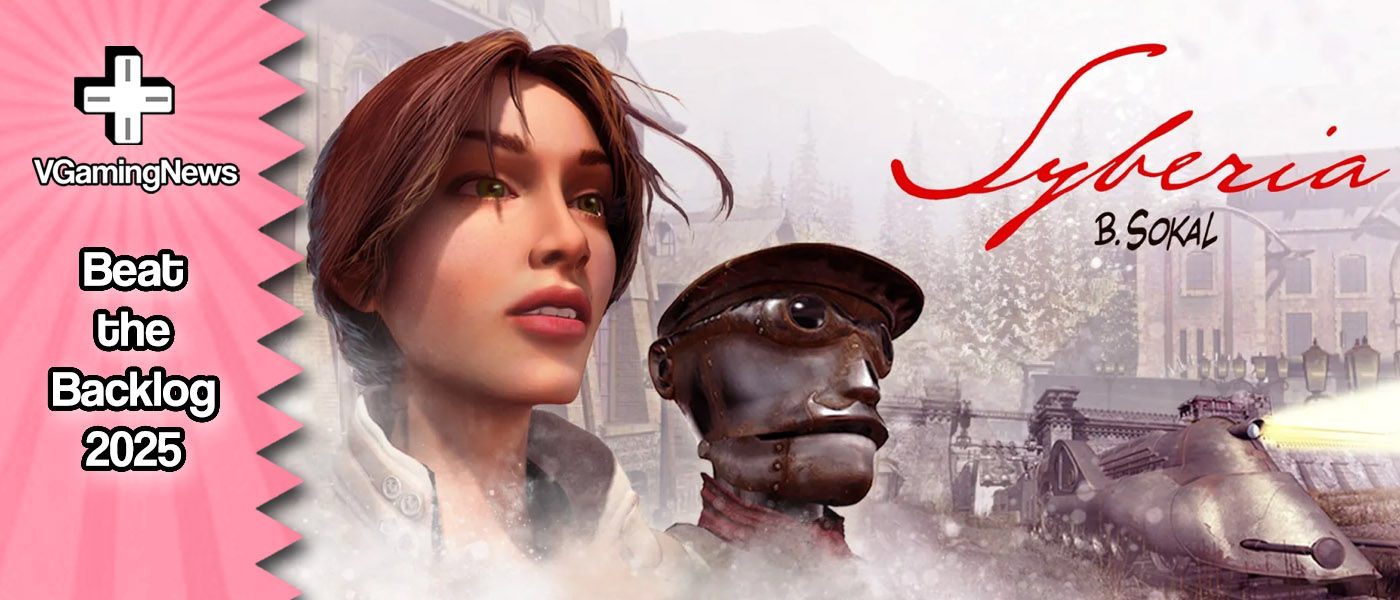Machinarium
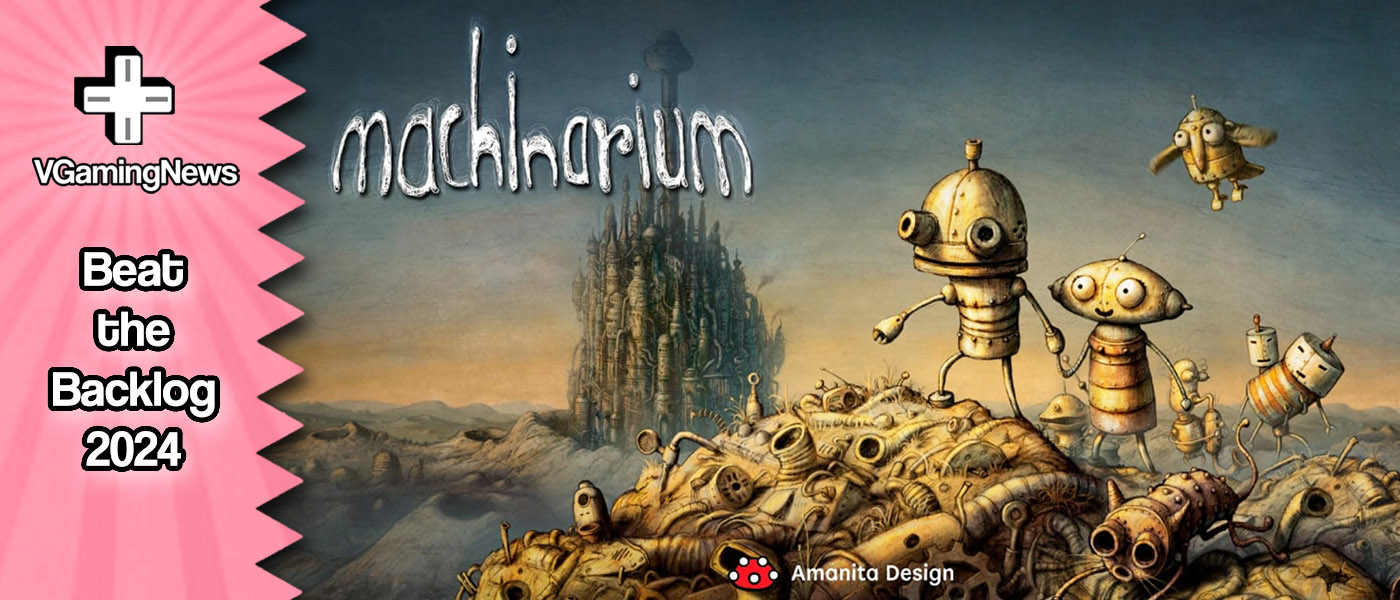
Drew has pledged to slowly but slowly churn his way through his sizeable stack of Nintendo Switch games for his ‘Beat the Backlog’ feature. Check out his main article to see what games he’s completed already!
Perhaps one of the longest standing games in my backlog (on ‘current gen’ machines, anyway), is Amanita Design’s dingy-cute point-and-click adventure, Machinarium. I bought it on Steam almost 10-years ago – I remember specifically choosing it as a balance between finally having a machine that could play half-decent games, whilst also not wanting to shell out on top end titles. Yeah, you read that right – this is a PC game from my backlog, which definitely makes it something of an outlier.
Unlike a lot of titles gathering metaphorical dust in my backlog, I actually did start Machinarium when I first bought it. I don’t remember exactly where I got up to before I got stuck and gave up, but I know it wasn’t that far, and that always bugged me. I like to think of myself as a pretty smart cookie, but I like point-and-click games because they regularly bring me back down to earth and leave me scratching my head looking for solutions!
Functionally, Machinarium plays as a run-of-the-mill point-and-click adventure. You use the mouse to navigate the screen, clicking to move your character to the desired area and to interact with any people and items in the vicinity. You have a small inventory for collecting helpful items and some of them can be combined to create new tools that will help you overcome the various puzzles standing in your way. In a long storied genre, Amanita Design hasn’t strayed from the tried and tested formula at all, and I think that’s for the best here, as it really lets the world and characters shine.
At A Glance
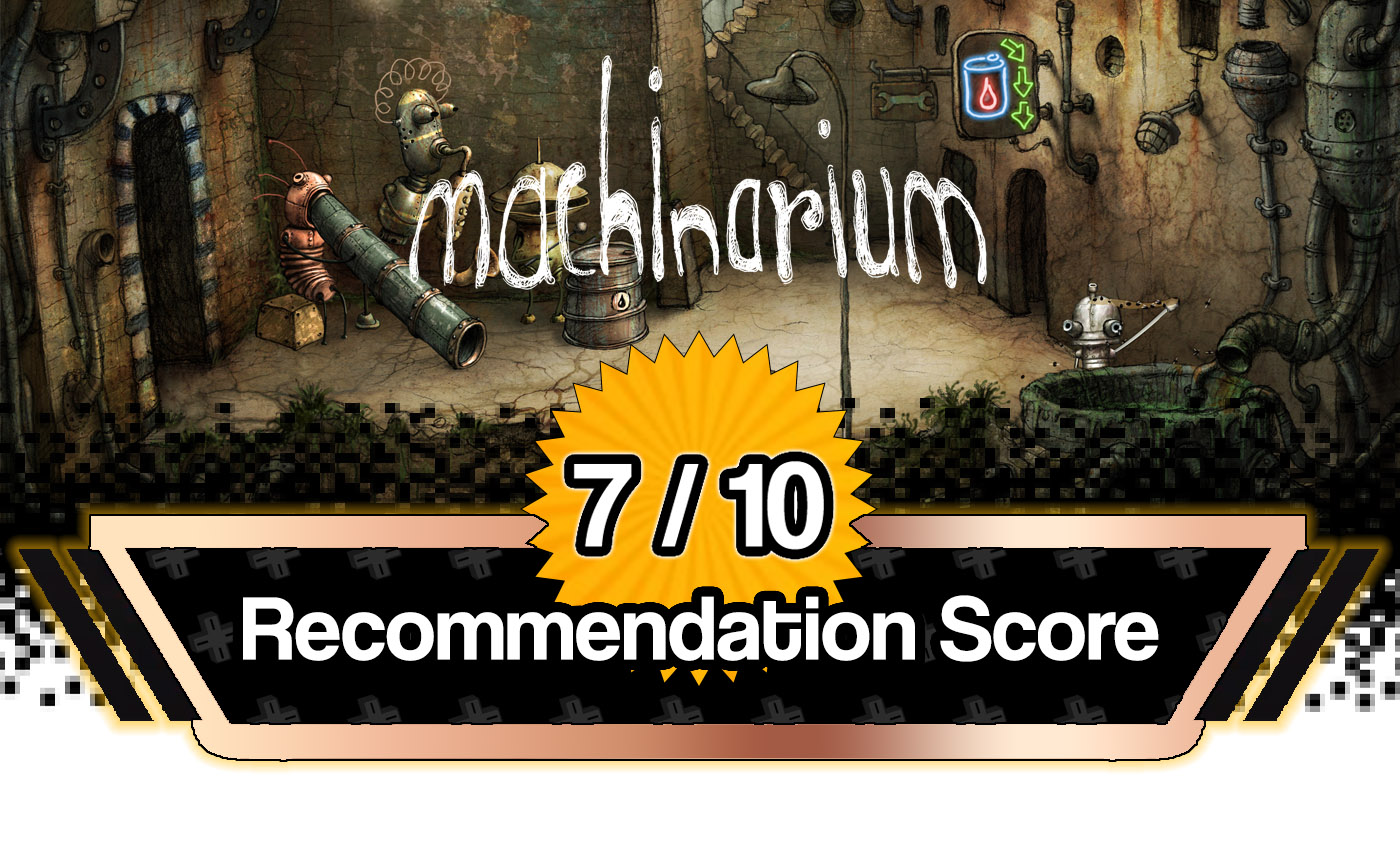
Date of original release: |
16/10/2009 |
Date added to backlog |
21/10/2015 |
Positives |
Negatives |
+ Rusty but stylish hand drawn art style + Excellent sense of world building + Help available when you need it |
– Finicky action boxes – Some ‘moon logic’ early on |
Available on: |
|
Want to see the whole of Drew’s Switch backlog? Check it out here and suggest something to play over on our socials!
If you’ve read any of my reviews before, you know I’m a sucker for hand drawn artwork in games, and that’s no different in Machinarium. The whole world is equal parts grimy, derpy, and adorable, drawn in a style that looks like Quentin Blake and Tim Burton got together to redraw the animated movie Robots (2005). The lead protagonist is called Josef; he’s a compact little robot with a domed head, goggly eyes and extendable limbs and is undoubtedly a sweet little thing. He’s something of a downtrodden citizen in the thriving robot city of Machinarium, and has often found himself on the receiving end of all manner of torment from a group of bully bots who have taken to throwing their weight around. The game opens with poor Josef finding himself discarded to the scrapheap, and it’s your duty to help him get fixed up, sneak back into the city, teach the bullies a lesson and rescue his girlfriend, Berta.
The entire story is told without a single utterance of dialogue, and I have to say, it’s marvellously executed. Instead of any true narration, or even on-screen text, you’re treated to little recollections from Josef in the form of thought bubbles. These little bubbles play out his memories of various scenarios and give you a really strong sense of what’s happened in the world prior to you getting involved. Stylized as scribbly cartoons, these memory scenes are really well done; it’s clear who’s who, what’s going on, and they each give a strong sense of feeling to each story, allowing you to really connect with Josef and Berta, and heaping disdain on the mean-spirited Black Cap Gang, as the bullies are known. Having the odd characters you meet throughout the game use this same method of storytelling is incredibly effective; Amanita Design have done a wonderful job in building individual histories for each rundown robot you meet and in sharing them in a universally understood language.
In fact, this strong sense of history runs throughout the game, and between the multitude of wacky characters and grime splattered imagery of the environments, the world of Machinarium feels entirely convincing and lived-in. While many of the areas you find yourself in have that common point-and-click problem of feeling somewhat ‘manufactured’ for the player (excuse the pun), I couldn’t care less about that here, as the places you explore carry such a tremendous sense of being alive beyond the borders of the screen. I regularly found myself pining to steer Josef into every dingy back alley shown on screen, or have him wander through every locked doorway, keen to explore the rusty world of Machinarium to the full.
But the world of Machinarium is hardly all sunshine and rainbows, as there are some pretty bleak visuals stashed amongst the derpy robots and silly puzzles. Yes, you’re treated to a pretty playful and sweet story, but some of the imagery hints at a sinister dystopia lurking beneath the surface. I think it’s this dichotomy of cutesy characters living in a potentially dark world that really captured my imagination whilst playing the game.
As I alluded to earlier, in a hands-on sense, Machinarium doesn’t do anything especially new in the point-and-click arena and instead plays its puzzling relatively safe. You’ll find a mix of traditional item collection, combination and utilisation puzzles, along with a number of more ‘mini game’ style conundrums too. The mini games were all centred around old school logic puzzles, like pushing buttons to move lights around a board, or rearranging blocks of different sizes to fit into designated areas – I certainly found them fun, but I think players with a lot of experience playing point-and-click games would have solved these puzzles a few times over in other games by now. On the whole though, I thought the difficulty was about right to keep my enjoyment level balanced with my frustration/determination.

It may have been because I needed time to get my brain into the right gear to complete point-and-click puzzles, but I found the first hour of Machinarium to be the least logical in terms of puzzle solving. I thought there were a few bits of ‘moon logic’ early on before it settled into a much more steady and smooth progression for the rest of the game. Thankfully, for those players like me who loathe googling the answers to things, Machinarium does have a built-in hint system to help you progress should you get stuck, and I really enjoyed the novel approach Amanita Design took in their implementation of this.
You can click on the hint button once per level to receive a vague clue about what you need to do to get moving, though I didn’t find this especially useful in helping me out. I usually knew what I needed to do, I just had no idea of how to do it. That’s where the next tier of help comes in – Machinarium actually has a whole walkthrough built-in, scribbled out in a huge locked tome that you can access from your inventory. You can unlock the tome any time by completing a little side-scrolling shoot-’em-up game, allowing you to see sketches that outline each of the puzzles in the level and see what you need to do to solve them. Cleverly though, you can only see the solutions for the level you’re currently on, and can’t flip through the pages to see every level in the game. This means that if you need a specific item that originates outside of the screen you’re on right now, you’ll have to unlock the tome again in a different place to see how everything fits together. And by having to play the mini game each time, it stopped me opening the guide every single time I hit a roadblock, and made sure I couldn’t idly do it on a whim without very consciously deciding I was entirely stuck. I think this is a vastly underutilised method of help that should absolutely become a standard in the genre. It not only eliminates the sense of defeat and potential spoilers of using Google or YouTube to solve the puzzles, but also ensures your hints don’t become an immediate crutch to players.
Machinarium is a ‘straight off the lot’ point-and-click puzzler that excels through some wonderful world building, clever storytelling and adorable characters. Whilst never straying far from the standard formula, there’s still plenty to enjoy, not least the fantastic, rust-covered visuals and well constructed soundtrack. This is one I’d recommend to newcomers and veterans of the genre in equal measure – while old school fans might not get much brain stretching out of it, it’s worth everyone’s time for the chance to experience this wacky welded world for yourself.
Thanks for taking the time to read our review. If you’d like to support us further, please consider buying us a coffee!


